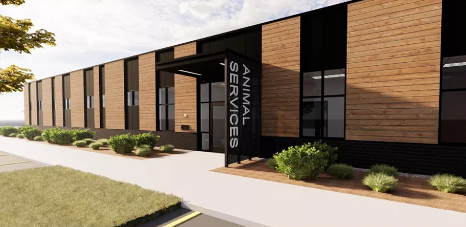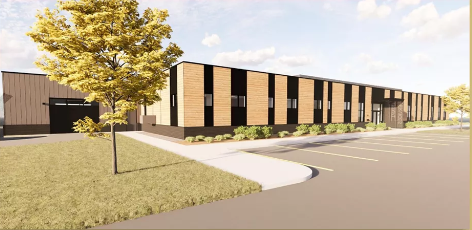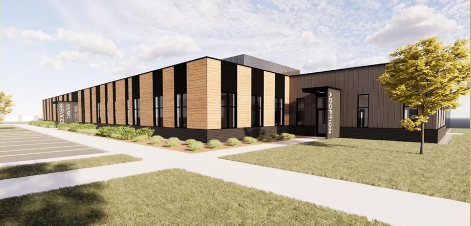New Animal Control and Care Facility
A new, 21,850-sf animal control and care facility in Des Moines will not only provide more space and capabilities for the city, it will also advance their electrified building portfolio. The new building will house a reception area, administration spaces, veterinary clinic and surgery area, kennels, treatment and support spaces, and public education spaces – all of which were designed to meet Association of Shelter Veterinarians (ASV) guidelines and regulations. The facility will also include multiple sustainability features to meet the city’s electrification goals and pursue LEED Gold certification.
IMEG is providing structural, mechanical, electrical, fire protection, and technology engineering design and construction administration services for the new facility. Engineers addressed the city’s concerns for odor control by providing a 100 percent outdoor air HVAC system and worked with the city to design an adjacent photovoltaic array, which provides electricity for this facility and several other city buildings that were also designed by IMEG. Engineers worked diligently to estimate electrical demand for several buildings to design a right-sized photovoltaic array for the building on a micro-grid scale. The design also includes primary heating and cooling systems sourced by electric utilities, a 1,000-amp dual electrical service (regional utility and PV array) as well as 30,000 CFM fresh outside air, airside energy recovery, a 1,000 MBH instantaneous domestic hot water plant, daylighting controls, and a heating-only water-to-water modular chiller used to satisfy all preheat and reheat loads in the facility.
The building’s adjacency to the Des Moines River provided both unique opportunities and challenges. The proximity to the river created the opportunity to reduce the initial electrical demand of the design with a 145-ton vertical closed loop geothermal system, as the river saturates the underlying soil and creates optimal heat transfer properties. However, the Army Core of Engineers required a 100-foot setback from the levee for the geothermal field, restricting the field layout considerably. This challenge was solved by creative circuiting and well placement. The building also has a heating dominate load profile, which was initially concerning to geothermal field temperature creep overtime but loading over a 20-year period was analyzed to determine creep would not be significant enough to be detrimental, and provisions for temporary field conditioning were provided in the loop water piping.
This project pursued a delicate balance of energy and cost efficiency. Though the city initially omitted the geothermal system design to satisfy budget constraints, they decided to place more emphasis on their energy efficiency goal and secure additional funding in order to include the highly efficient system. The design is estimated to perform 34 percent better than the ASHRAE 90.1-2010 baseline (not including the PV array, as it is not within the LEED boundary).
The new facility is a significant upgrade to the city’s current outdated and undersized facility and will meet the needs of the growing pet population and increased demand for animal control facility space. It will also serve to advance the city’s goal for sustainability by providing a green solution for the naturally energy-intensive facility.
Renderings courtesy of Hartman Trapp Architecture Studio











